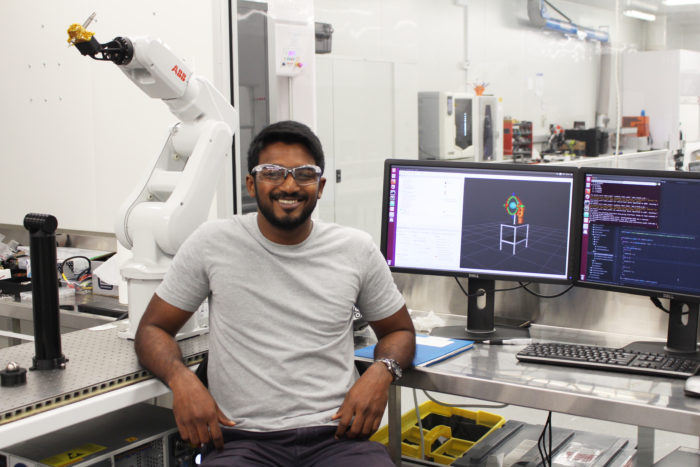News
3D printing bone tissue
Jun 28 2022
We recently said farewell to ACES affiliate and IPRI and TRICEP engineer and researcher, Jerome Justin, who is moving on to his next career chapter in robotics.

Jerome was part of a number of innovative projects throughout his time with IPRI, including developing 3D Alek, a customised bioprinter built to treat microtia, which is now based at the Royal Prince Alfred Hospital Sydney. We sat down with Jerome for a chat about his involvement in the project, his time at IPRI, the launch of TRICEP and more.
What has your role been and how long have you been working here?
I was employed by IPRI in March, 2018 as a mechatronics engineer. My role was to help with the development of hardware and software technologies for 3D bioprinting research. Some of my other roles also involved writing subject content for MOOCs, supervising students and training staff.
What was your background before joining IPRI and working with ACES?
I finished a Bachelor of Engineering in Mechatronics in 2017 at UOW, so my background is mostly robotics in general. Before starting at IPRI, I was mainly working on several robotics projects that focused on motion planning, perception, 3D printing with robotic arms and software development for robots.
You’ve been part of the 3D Alek project, which has recently been in the news as a solution to treat microtia and is now at RPA Hospital Sydney. Can you tell us a bit about that and what your specific involvement was?
3D Alek is a custom bioprinter we built here at UOW for our collaborators in RPA Sydney. I was one of the engineers working on this project. When I first started at IPRI, almost all of the mechanical design of this product had been completed by Rhys Cornock. After my commencement, I joined the ear project team and developed the firmware for the control system of 3D Alek. Following that, I developed a custom 3D slicing software.
At the end of all the software development, we had a fully functioning bioprinter in hand. At that point, we decided to revise the design and make a second generation of 3D Alek. This allowed us to produce an industrial grade bioprinter. This was recently delivered to RPA, where our collaborators will do further research and animal studies in 2019. I’m certain that one day this research I have contributed to will be available to patients at every hospital as a service. It was such an honour to work on this project. I never thought that a degree in engineering would enable me to help people with medical needs until I was part of it.
You’ve also been here for the move and launch of TRICEP. How was that transition and what do you think the future holds for TRICEP?
TRICEP consists of state-of-the-art capabilities in bioprinting, 3D printing, manufacturing and large-scale synthesis of biomaterials – and of course an amazing team. I can’t wait to see how TRICEP will do in the future and are looking forward to seeing it expand and become an independent bioprinting company based in Illawarra.
What’s been your favourite part about working here?
I think the best part has been the diversity of people’s background and culture. I’ve also enjoyed supervising and teaching undergraduate students as well as being very fortunate to work alongside some of the world leading scientists. Above all, I’ve been a part of some ground-breaking research in bioprinting and have contributed to research that will someday help a lot of people, which I’m extremely proud of.
If you weren’t doing this job for a living, what do you think you would you be doing?
I have to say, I love what I do and I’m really happy with how my career has been progressing. I’m also a workaholic, so if I had to choose a different thing to do with my life, I would probably start a robotics company and manage the business side of things rather than the technical work.
So, what’s next for you?
I’m very excited to join Komatsu as a software engineer for their robotics and automation department. Komatsu is a mining tech company. I‘m eager to throw myself into the deep end and learn new things and solve complex problems that await me.
Thanks for your time, Jerome – and all the best for your next chapter.
You can also read more about 3D Alek and the ear project here.













